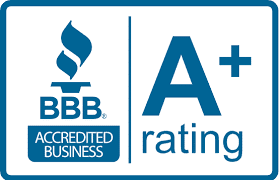
Replacing a roof has a price tag that shifts based on materials, labor, and complexity. A typical asphalt shingle roof might stay within a reasonable budget, while premium materials like metal or slate push costs higher. Hidden expenses, such as permit fees, structural repairs, or old roof disposal, can quickly add up. Location also plays a role, with labor rates and weather conditions affecting pricing. Weighing these factors and exploring cost-saving strategies can make a roof replacement more manageable without sacrificing quality.
Factors Influencing Roof Replacement Cost
Roof replacement pricing isn’t one-size-fits-all, as several elements dictate the final cost. The type of material, labor expenses, and the complexity of the roof all contribute to the overall budget. Additional factors like location, permit fees, and necessary repairs can push costs higher than expected. Knowing what affects pricing helps in making informed decisions and finding ways to manage costs effectively.
Roof Size and Complexity
Larger roofs require more materials and labor, increasing overall costs. A simple, single-story home with a low-slope roof is cheaper to replace than a multi-story house with steep pitches and multiple valleys. Complex designs demand specialized skills, extending labor time and pushing costs higher. Dormers, skylights, and chimneys also add to the expense due to the extra work required for proper installation.
Material Selection
Roofing materials come in a wide price range, with asphalt shingles being the most affordable and slate or metal carrying premium costs. Each material has different durability levels, maintenance requirements, and installation complexities. Higher-end options may offer better longevity but require a larger upfront investment. Budget-conscious homeowners often balance cost with lifespan to get the best value.
Labor and Installation
Skilled labor is a major factor in roof replacement pricing, as experienced contractors charge higher rates. Regions with a high roofer demand may have inflated labor costs, affecting the final bill. Complex installations take longer, increasing hourly or project-based labor fees. Hiring a reputable contractor ensures quality work but comes at a premium compared to lower-cost alternatives.
Location and Permits
Areas with high living costs often have pricier roofing services due to increased labor and material expenses. Local building codes may require permits, which add to the total price, especially in regions with strict regulations. Some states enforce energy-efficiency standards or hurricane-resistant materials, further influencing expenses. Climate conditions also play a role, as extreme weather regions require stronger, costlier materials.
Removing and Disposing of the Old Roof
A complete roof replacement often involves tearing off the existing structure, which increases labor and disposal fees. Heavier materials like tile and slate require more effort to remove, making the process more expensive. Dumpster rentals and landfill fees contribute to the total cost, especially in areas with high waste disposal rates. Some homeowners opt for overlaying a new roof over the old one to cut expenses, though this isn’t always advisable.
Structural Repairs
Roof damage beyond the surface layer can lead to unexpected costs, especially if decking or support beams need reinforcement. Water damage, rot, or pest infestations weaken the structure and require additional labor and materials for proper repair. A thorough inspection before replacement helps identify these issues early, preventing budget surprises. Ignoring structural damage can result in long-term problems, so timely repairs are essential despite the added expense.
Roof Replacement Cost Based on Material Type
Roofing materials significantly determine the total replacement cost, with prices ranging from budget-friendly to premium options. The choice impacts upfront expenses, longevity, maintenance, and energy efficiency. Some materials require specialized labor, further increasing installation costs. Weighing the long-term benefits against initial pricing helps homeowners make a cost-effective decision.
Asphalt Shingles Offer Affordability
Asphalt shingles remain the most popular choice due to their low cost and ease of installation. A variety of styles and colors provide flexibility without exceeding budget constraints. While they offer decent durability, they have a shorter lifespan than premium materials. Regular maintenance and proper installation help maximize their longevity.
Metal Roofing Provides Durability at a Higher Price
Metal roofs cost more upfront but deliver long-term savings through durability and energy efficiency. Aluminum, steel, and copper offer different price points, with copper being the most expensive. Installation requires specialized skills, which raises labor costs compared to asphalt shingles. Resistance to fire, wind, and pests makes metal an attractive investment for homeowners seeking longevity.
Tile and Slate Roofs Come With Premium Costs
Clay and concrete tiles bring a distinctive look but require a significant budget due to material and labor expenses. The weight of these materials often necessitates structural reinforcement, adding to the total cost. Slate roofs, known for their elegance and durability, command even higher prices. Despite the expense, these options offer exceptional longevity and weather resistance.
Wood Shakes Deliver a Natural Look at Mid-Range Pricing
Wood shakes provide a rustic aesthetic and moderate pricing, making them a mid-tier option. Cedar and redwood are the most common choices, offering durability and natural insulation. Higher maintenance needs and susceptibility to moisture drive up long-term costs. Fire resistance treatments and regular upkeep improve performance but add to overall expenses.
Synthetic Roofing Balances Cost and Longevity
Composite materials mimic the look of wood, slate, or tile at a more affordable price. Lightweight construction eliminates the need for structural reinforcement, reducing installation costs. Durability varies by manufacturer, but most synthetic options resist weather damage and require minimal upkeep. Homeowners seeking a balance between aesthetics, performance, and cost choose this material.
Other Expenses That Affect Roof Replacement Cost
The total price of a roof replacement goes beyond just materials and labor, as several hidden costs can increase the final bill. These extra expenses often catch homeowners off guard, adding unexpected charges to the project. Factoring in these additional costs helps with better budgeting and prevents surprises during installation.
Additional Layers Add to the Total Price
A protective underlayment is necessary to prevent leaks and improve durability, but it adds to the cost. Higher-quality insulation enhances energy efficiency but requires an additional investment. Skimping on these elements may lead to long-term damage and higher energy bills.
Roof Ventilation and Leak Protection
Proper ventilation extends the lifespan of the roofing system by preventing moisture buildup. Flashing around chimneys, vents, and skylights helps prevent leaks but requires skilled labor for installation. Failing to include these upgrades can lead to costly repairs later.
Permit Fees Depend on Local Regulations
Local building codes often require permits before roof replacement, adding an extra cost. Fees vary depending on the region and the complexity of the project. Ignoring permit requirements can lead to fines or forced removal of improperly installed roofing.
Removing and Disposing of Old Materials
Tearing off the old roof requires labor and dumpster rental fees, increasing overall costs. The weight of discarded materials, especially tiles or slate, can drive up disposal expenses. Some homeowners opt for overlaying a new roof instead of removal, but this approach has long-term drawbacks.
Tips for Managing Roof Replacement Costs
A roof replacement is a major investment, but strategic planning can help keep expenses under control. Comparing quotes, timing the project correctly, and exploring financing options make the process more affordable. Investing in high-quality materials prevents costly repairs, while choosing the right contractor ensures proper installation. Smart decisions during the replacement process can lead to long-term savings without sacrificing durability.
Compare Multiple Quotes
Requesting estimates from several contractors provides insight into pricing variations. A breakdown of costs helps identify potential overcharges or unnecessary add-ons. Verifying credentials and past work ensures a fair price without compromising quality. Selecting the cheapest option without considering experience can lead to poor workmanship and future repair costs.
Find Seasonal Discounts and Promotions
Roofing companies often offer discounts during off-peak seasons when demand is lower. Scheduling a replacement during mild weather can lead to faster completion and better deals. Waiting until peak seasons may result in higher labor costs and limited availability. Taking advantage of promotions or bulk pricing on materials reduces overall expenses.
Check Financing and Insurance Options
Some contractors offer payment plans that break down the total cost into manageable installments. Homeowners’ insurance may cover roof replacement if damage results from storms or unforeseen events. Filing claims requires proper documentation, and coverage depends on policy terms. Exploring loan options or government assistance programs can help spread out expenses without upfront financial strain.
Invest in Quality Materials
Cheaper materials may save money initially but often require more frequent repairs or replacements. High-quality roofing provides better resistance to weather, reducing long-term maintenance costs. Energy-efficient options lower utility bills and add value to the home. Making an informed material choice balances upfront spending with long-term savings.
Perform Regular Maintenance
Cleaning gutters, inspecting shingles, and fixing minor damage extend a roof’s lifespan. Small issues, when ignored, turn into costly repairs or premature replacements. Routine maintenance prevents leaks, mold growth, and structural damage. Setting aside a budget for periodic inspections helps avoid unexpected expenses.
Roof Replacement Cost Awareness Leads to Better Planning
Material selection, labor fees, roof complexity, and additional expenses contribute to the final replacement cost. Budgeting for hidden costs like permits, underlayment, and ventilation prevents unexpected financial strain. Comparing quotes, timing the project strategically, and exploring financing options help manage expenses without cutting corners. A well-planned roof replacement ensures durability and leads to long-term savings by reducing maintenance and energy costs.
Stay informed about roof replacement costs and explore expert insights on our Faircloth Roofing Inc. blog.






